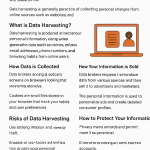- The Rise of Remote Work and Its Cybersecurity Implications
- How Cybersecurity Has Evolved with Remote Work
- 1. Zero Trust Architecture Became the Standard
- 2. Surge in Endpoint Security
- 3. Multi-Factor Authentication (MFA) Became Non-Negotiable
- 4. Rise in Phishing & Social Engineering Attacks
- 5. Cybersecurity Awareness Training Is Now Business-Critical
- Key Cybersecurity Challenges of Remote Work
- Best Practices for Securing the Remote Workforce
- The Future of Cybersecurity in the Remote Work Era
- Final Thoughts
CYBERSECURITY
Remote work has transformed from a temporary solution during the COVID-19 pandemic into a permanent feature of modern business. While this shift has provided flexibility, increased productivity, and access to a global talent pool, it has also changed cybersecurity forever. Organizations are now facing new challenges such as cloud security risks, endpoint vulnerabilities, phishing attacks, and data breaches that are directly tied to the remote work model.
In this blog post, we’ll explore how remote work reshaped cybersecurity, the threats businesses face today, and the best practices to secure a distributed workforce.
The Rise of Remote Work and Its Cybersecurity Implications
Before 2020, only a fraction of employees worked remotely. Today, hybrid and fully remote workforces are standard in industries like technology, finance, healthcare, and education. This shift introduced an explosion of new cybersecurity risks:
- Expanded Attack Surface – With employees logging in from personal devices, unsecured Wi-Fi networks, and multiple geographies, the traditional “corporate perimeter” no longer exists.
- Cloud Dependence – Collaboration tools like Zoom, Slack, Microsoft Teams, and cloud services like AWS, Azure, and Google Cloud became essential. Each service is another potential vulnerability.
- BYOD Policies – “Bring Your Own Device” increases flexibility but also exposes businesses to malware infections and data leaks.
👉 According to IBM’s 2023 Cost of a Data Breach Report, remote work-related breaches cost companies nearly $1 million more on average compared to breaches in traditional office setups.
How Cybersecurity Has Evolved with Remote Work
1. Zero Trust Architecture Became the Standard
Gone are the days when firewalls and VPNs alone provided adequate protection. Businesses now adopt Zero Trust Security Models, which operate on the principle of “never trust, always verify.” Every login attempt, device, and application request is continuously authenticated and monitored.
2. Surge in Endpoint Security
With employees using laptops, tablets, and smartphones, endpoint protection platforms (EPPs) and endpoint detection and response (EDR) solutions became crucial. Companies like CrowdStrike, SentinelOne, and Microsoft Defender for Endpoint are leading this transformation.
3. Multi-Factor Authentication (MFA) Became Non-Negotiable
Passwords alone are no longer enough. Remote work accelerated the universal adoption of MFA and biometric authentication (like fingerprint scans and facial recognition) to reduce unauthorized access.
4. Rise in Phishing & Social Engineering Attacks
The FBI’s Internet Crime Complaint Center reported that phishing was the most common cybercrime in 2022. Remote workers are prime targets because attackers exploit human error, often disguised as urgent work emails or login requests.
5. Cybersecurity Awareness Training Is Now Business-Critical
With employees becoming the new frontline defense, companies now invest heavily in cybersecurity awareness programs. Tools like KnowBe4 provide phishing simulations and training modules to educate employees.
Key Cybersecurity Challenges of Remote Work
- Shadow IT – Employees often use unapproved tools like free file-sharing platforms, leading to data leaks.
- Home Wi-Fi Security – Many remote workers don’t secure their home routers, leaving corporate data at risk.
- Compliance Risks – Remote work makes it harder to comply with regulations like GDPR, HIPAA, and PCI-DSS.
- Insider Threats – Disgruntled or negligent employees pose a greater risk in decentralized environments.
- Ransomware Attacks – With the rise of Ransomware-as-a-Service (RaaS), attackers target businesses where remote access is loosely secured.
Best Practices for Securing the Remote Workforce
Here are actionable strategies businesses must adopt to future-proof cybersecurity:
- Implement Zero Trust frameworks with continuous monitoring.
- Mandate MFA across all accounts and devices.
- Provide company-approved devices or enforce Mobile Device Management (MDM) solutions.
- Encrypt data both at rest and in transit.
- Use VPN alternatives like Secure Access Service Edge (SASE) and software-defined perimeters (SDPs).
- Regularly audit cloud platforms for misconfigurations.
- Offer ongoing employee training on phishing, password hygiene, and social engineering.
- Adopt AI-driven cybersecurity tools for real-time threat detection.
The Future of Cybersecurity in the Remote Work Era
Remote work is here to stay, and so are the evolving cyber threats. The future points toward AI-powered cybersecurity solutions, greater adoption of biometric authentication, and decentralized security models. Companies that adapt quickly will thrive, while those clinging to outdated security frameworks risk devastating breaches.
As businesses continue embracing remote and hybrid models, cybersecurity will remain the backbone of digital trust. Protecting employees, customers, and data is no longer optional—it’s a competitive advantage.
Final Thoughts
The remote work revolution permanently reshaped cybersecurity. From zero trust to AI-powered threat detection, organizations have had to reinvent their security strategies to protect a borderless workforce. Companies that take a proactive approach—focusing on employee training, advanced endpoint protection, and continuous authentication—will be best positioned to thrive in this new era.
🔗 Explore more on Cybersecurity & Infrastructure Security Agency (CISA) for best practices on securing remote work.










